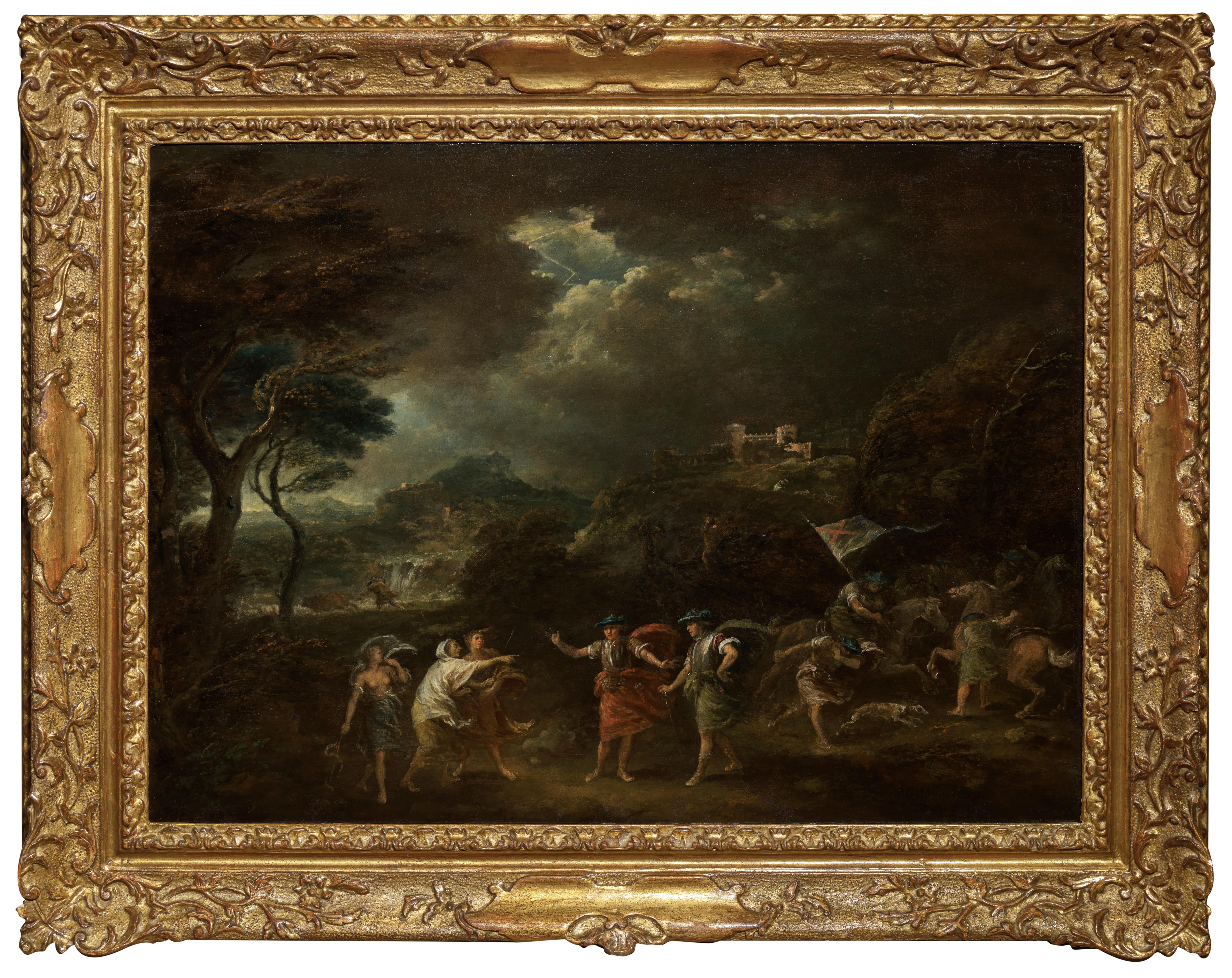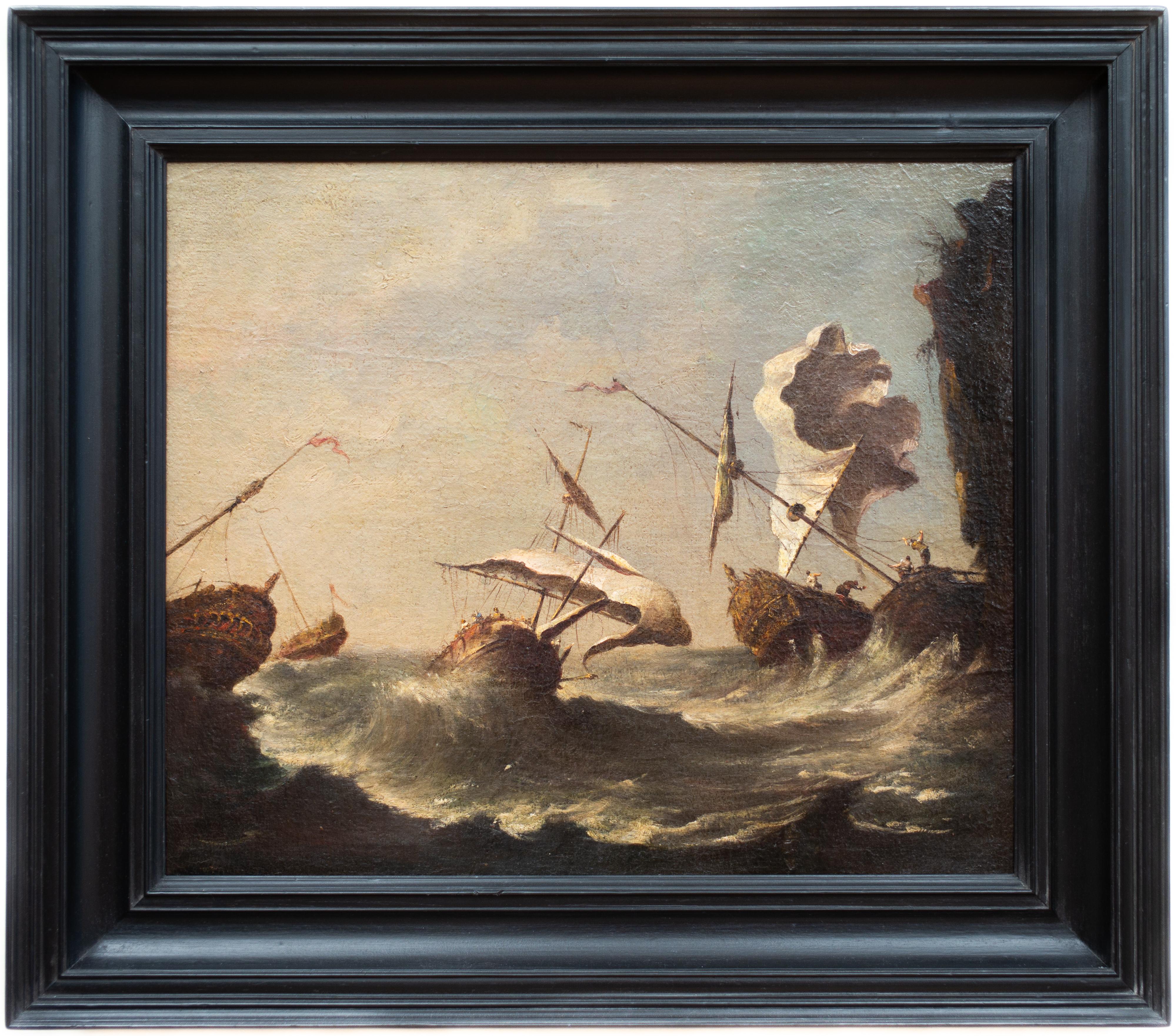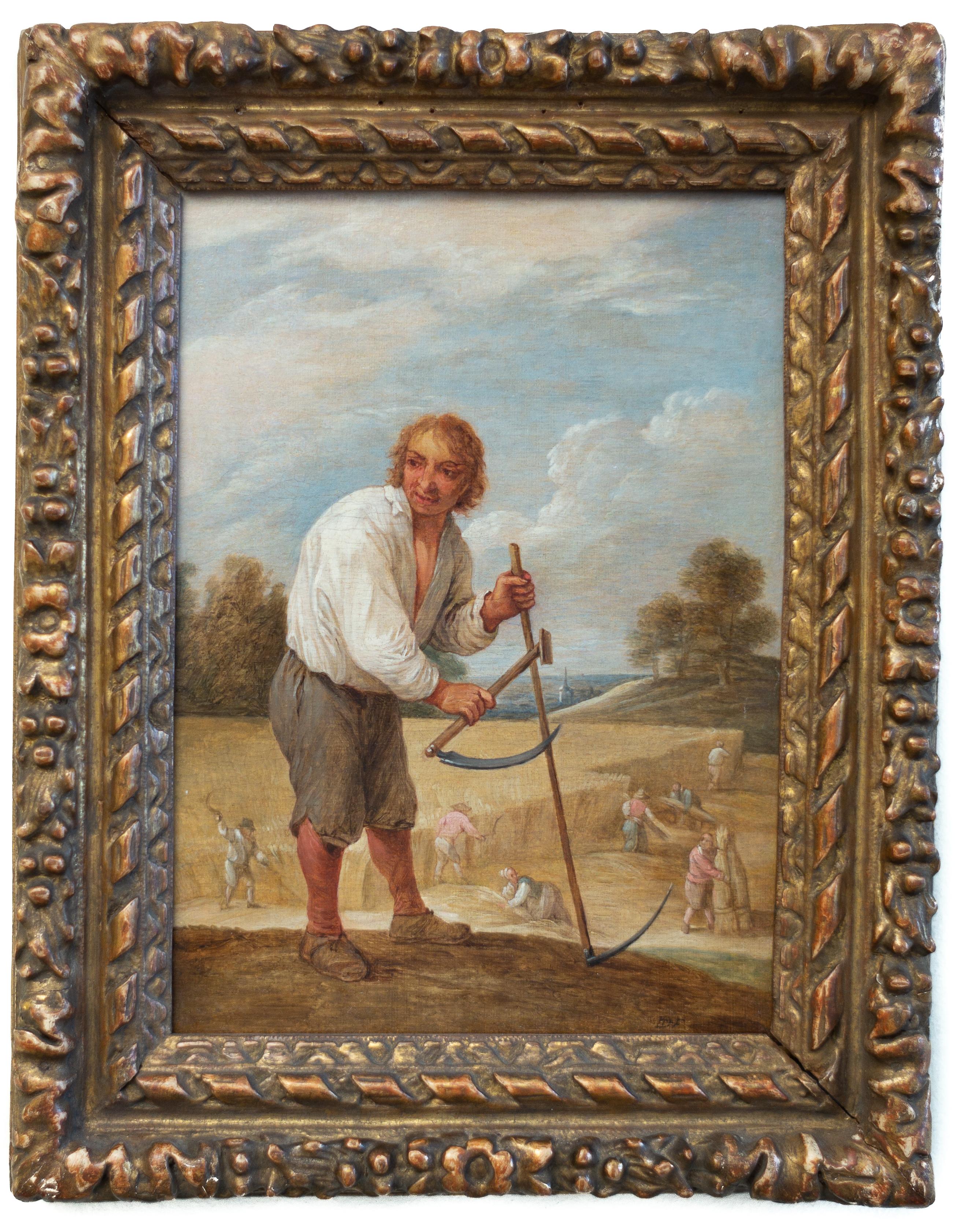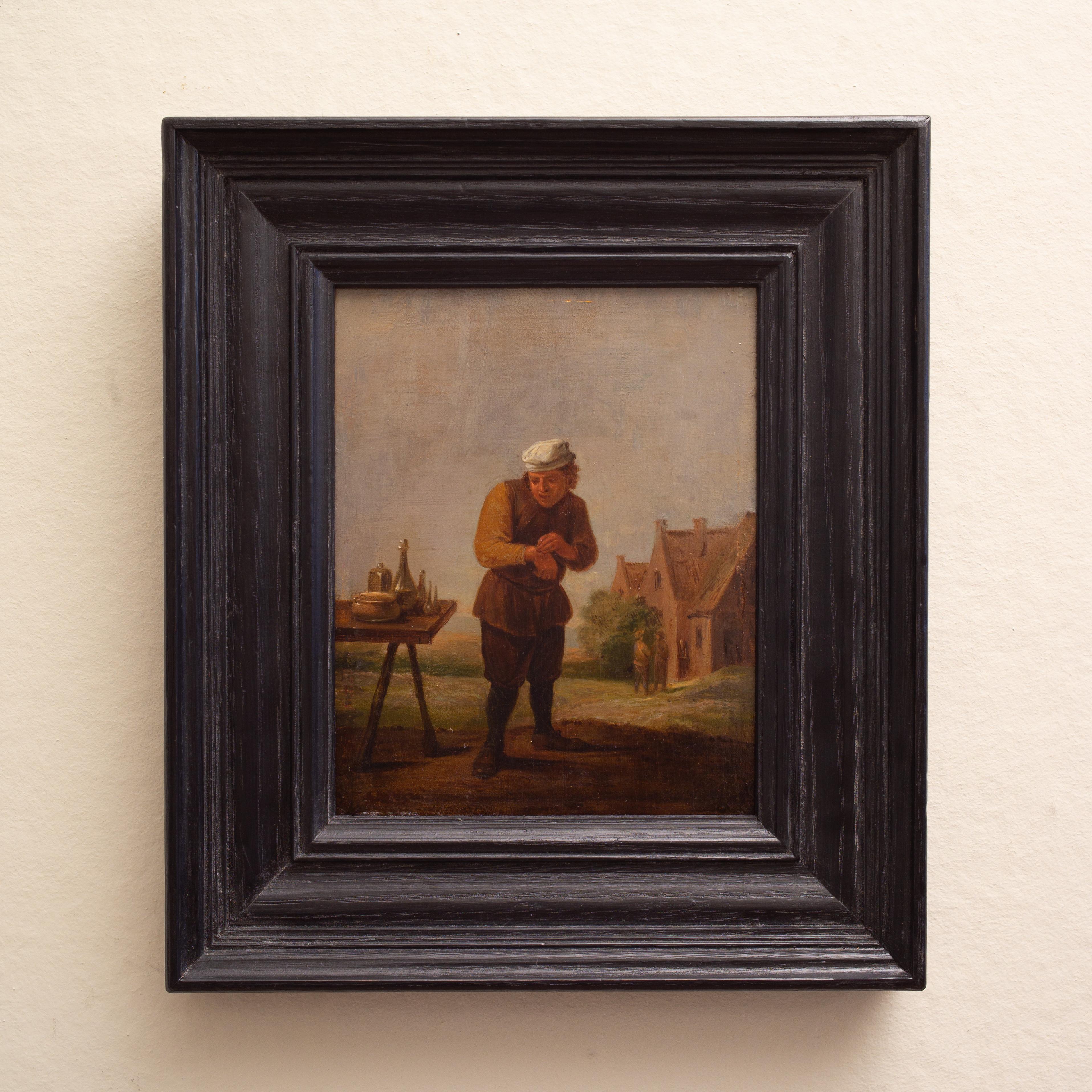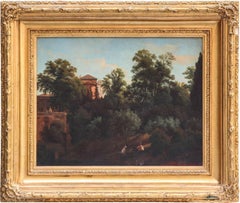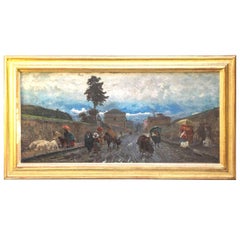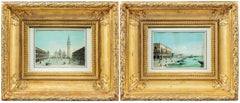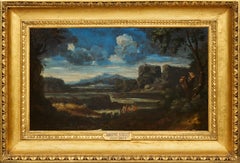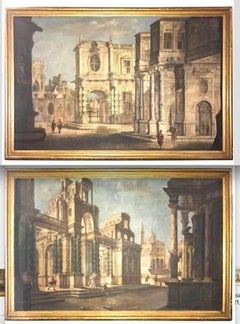
Pair of Italian 18th Century Tempera on Canvas Classical Paintings "Capriccio"
View Similar Items
Want more images or videos?
Request additional images or videos from the seller
1 of 15
Pietro PaltronieriPair of Italian 18th Century Tempera on Canvas Classical Paintings "Capriccio"1720
1720
About the Item
- Creator:Pietro Paltronieri (1673 - 1741, Italian)
- Creation Year:1720
- Dimensions:Height: 45.28 in (115 cm)Width: 55.12 in (140 cm)Depth: 2.37 in (6 cm)
- Medium:
- Movement & Style:
- Period:
- Condition:
- Gallery Location:Rome, IT
- Reference Number:1stDibs: LU100415248092
About the Seller
5.0
Vetted Seller
These experienced sellers undergo a comprehensive evaluation by our team of in-house experts.
1stDibs seller since 2018
25 sales on 1stDibs
Typical response time: 2 hours
More From This SellerView All
- 19th Century Roman Landscape oil on canvas with Giltwood FrameLocated in Rome, ITAmaizing 19' century Roman landscape depicting a part of Villa Borghese with Trinità dei Monti. With a finely carved gilt wood coeval frame. Measurements with frame cm 65 x78 wit...Category
19th Century Old Masters Landscape Paintings
MaterialsOil
- 19th Century Italian Landscape Oil Painting - Via Flaminia on a Sunday morningBy Pio JorisLocated in Rome, ITPio Joris (Rome, 1843-1922). The Via Flaminia, a Sunday morning," 1869, with frame 160 x 83 cm. Signed P. Joris, Pio Joris attended the Istituto di Belle Arti in Rome and in 1861 h...Category
Mid-19th Century Impressionist Landscape Paintings
MaterialsOil
- 19th Century Italian Landscape Oil Painting - Via Flaminia on a Sunday morningBy Pio JorisLocated in Rome, ITPio Joris (Rome, 1843-1922). The Via Flaminia, a Sunday morning," 1869, with frame 160 x 83 cm. Signed P. Joris, Pio Joris attended the Istituto di Belle Arti in Rome and in 1861 he enrolled at the Accademia di San Luca, where he remained for just a year. On a visit to the 1st Esposizione Nazionale di Belle Arti of Florence in 1861 he was attracted by the naturalistic works from the Naples school. He came into contact with Domenico Morelli and Filippo Palizzi during a trip to Capri, Sorrento and Naples in 1866. In Rome, he kept company with Mariano Fortuny, whose painting, with its pleasant, captivating luministic effects, made a very strong impression on Joris. That was how he developed his own very personal artistic language, which went on to bring him remarkable commercial success on an international scale, helped by his collaboration with Paris art dealer...Category
Mid-19th Century Impressionist Landscape Paintings
MaterialsOil
- Pair of Exceptional Italian 18th Century Still-Life PaintingsLocated in Rome, ITThis pair of excellent Italian still life oil on canvas with flowers and fruit with classical ruins on the background and colored drapes create harmony of the composition. Notable ...Category
Early 18th Century Old Masters Still-life Paintings
MaterialsOil
- Pair of Exceptional Italian 18th Century Still-Life PaintingsLocated in Rome, ITThis pair of excellent Italian still life oil on canvas with flowers and fruit with classical ruins on the background and colored drapes create harmony of the composition. Notable ...Category
Early 18th Century Old Masters Still-life Paintings
MaterialsOil
- Pair of Italian 18' century Paintings with GardensLocated in Rome, ITPair of Italian 18' century paintings , oil on canvas with Venetian Palace gardens , antiques sculptures and various figures . Measurements with f...Category
Mid-18th Century Old Masters Landscape Paintings
MaterialsOil
You May Also Like
- Carlo Grubacs(Venetian master)- Pair of 19th century Venice landscape paintingsBy Carlo GrubacsLocated in Varmo, ITCarlo Grubacs (Perasto 1801 - Venice 1870) - Venice, pair of views of Piazza S. Marco and the Basin towards the Riva degli Schiavoni. 11 x 16 cm without frame, 29.5 x 34.5 cm with f...Category
Mid-19th Century Old Masters Landscape Paintings
MaterialsTempera, Paper
$5,272 Sale Price20% OffFree Shipping - Carlo Grubacs(Venetian master)- Pair of 19th century Venice landscape paintingsBy Carlo GrubacsLocated in Varmo, ITCarlo Grubacs (Perasto 1801 - Venice 1870) - Venice, pair of views of Piazza S. Marco and the Piazzetta towards the Clock Tower. 19 x 24 cm without frame, 25 x 30 cm with frame. An...Category
Mid-19th Century Old Masters Landscape Paintings
MaterialsTempera, Paper
$4,173 Sale Price24% OffFree Shipping - Italian Landscape with Jack Players, a painting by Gaspard Dughet (1615 - 1675)By Gaspard DughetLocated in PARIS, FRHere Gaspard Dughet offers us an idyllic vision of the Roman countryside. The stages follow one another in a perfectly structured composition, revealing here a lake, there travellers walking along, gradually leading our eye to the blue horizon. But behind its classical composition, this landscape is particularly interesting because of three anthropomorphic details that the artist has hidden, opening the way to a radically different interpretation... 1. Gaspard Dughet, a landscape artist in the light of Poussin Gaspard Dughet was born on June 4th, 1615 in Rome where his father, of French origin, was a pastry cook. He was probably named Gaspard in honour of his godfather Baron Gaspard de Morant, who was, or may have been, his father's employer. His older sister Jeanne married the painter Nicolas Poussin (1594 - 1655) on September 1st, 1630. The young Gaspard was apprenticed with his brother-in-law at the beginning of 1631, which led his entourage to name him Gaspard Poussin. The first preserved works of the painter date from the years 1633-1634 and were painted in Poussin’s studio. Around 1635, Gaspard Dughet became emancipated and began to frequent the Bamboccianti circle. In 1636, he became friends with the painter Jean Miel (1599 - 1656), but also with Pier Francesco Mola (1612 - 1666) and Pietro da Cortona (1596 - 1669). This was also the time of his first trips throughout Italy. The painter, although of French origin, appears never to have visited France. In 1646 he settled permanently in Rome. A recognized painter with a solid book of orders, he remained faithful to landscape painting throughout his life, alternating between cabinet paintings and large decorative commissions, using both oil and fresco. Nailed to his bed by rheumatic fever at the age of 58, he died on May 25, 1675. 2. Discovering an idealized landscape Beyond a relatively dark foreground that takes us into the landscape, we discover a vast bluish horizon: a plateau surrounded by deep ravines advances to the right, overhanging an expanse of water that sparkles below. A road winds through a mountainous mass as if leading us to the fortress that crowns it; another town appears in the distance at the foot of three conical mountains. The composition is rigorous, mineral, and structured by geometric volumes. The various stages in the landscape lead one to the next attracting the eye towards the horizon located in the middle of the canvas. The general impression is that of a welcoming and serene nature. In many places the paint layer has shrunk, or become transparent, revealing the dark red preparation with which the canvas was covered and accentuating the contrasts. Human presence is limited to three jack players, leaning against a mound in the foreground. Their long garments, which may evoke Roman togas, contribute to the timelessness of the scene. Close examination of the canvas reveals two other travellers on the path winding between the rocks. Made tiny by the distance, their introduction in the middle register, typical of Dughet's art, lengthens the perspective. While it is difficult to date the work of a painter who devoted his entire life to the representation of landscapes, it is certain that this painting is a work from his later years. The trees that occupied the foreground of his youthful compositions have been relegated to the sides, a stretch of water separates us from the arid mountains counterbalanced by two trees represented on the opposite bank. The introduction of this stretch of water in the middle of the landscape betrays the influence of the Bolognese and in particular of the Dominiquin (1581 - 1641) A number of similarities with a drawing in the British Museum might suggest a date around 1656-1657, since, according to Marie-Nicole Boisclair , it has been compared with the Prado's Landscape with the Repentant Magdalene, painted at that period. 3. Three amazing anthropomorphic details While some late Renaissance landscapes offer a radical double reading, allowing one to see both a face or a human body behind the representation of a landscape, it seems interesting to us to hypothesize that Gaspard Dughet had fun here by slipping in a few details that, taken in isolation, evoke human or animal figures. We will give three examples, looking closely at a cloud, the trunk of a broken tree and the top of a cliff. The main cloud could thus evoke a Christ-like face or that of an antique god...Category
1650s Old Masters Landscape Paintings
MaterialsOil
- Macbeth and the Three Witches a Painting on Panel by Francesco ZuccarelliBy Francesco ZuccarelliLocated in PARIS, FRThis painting, created during Zuccarelli's stay in England, represents the decisive moment when Macbeth, together with Banquo, meets the three witches who announce that he will be Ki...Category
1760s Old Masters Landscape Paintings
MaterialsOil, Wood Panel
- The Parade of Swiss Guards a painting on canvas by Gabriel de Saint-AubinLocated in PARIS, FRIn this painting, Gabriel de Saint-Aubin, the great chronicler of the reign of Louis XV, takes us to the annual parade of the Swiss Guards at the Plaine de...Category
1760s Old Masters Figurative Paintings
MaterialsCanvas, Oil
- 17th Century by Simone Cantarini Adoration of The Magi Painting Oil on CanvasLocated in Milano, LombardiaSimone Cantarini (Pesaro 1612 - Verona 1648) Adoration of the Magi Oil on paper applied to canvas, cm. 16,5 x 24 – with frame cm. 22 x 29 Antique sh...Category
Early 17th Century Old Masters Figurative Paintings
MaterialsCanvas, Cotton Canvas, Oil
Recently Viewed
View AllMore Ways To Browse
Very Large 19th Century Oil Painting
Contemporary House Winter
Knife Paris
Russian Realist
John Ireland
20th Century Venice Oil Paintings
10 X 14 Canvas
Vintage Victorian Signs
Impressionist Seine
George Hotel
Coastal Artwork
Sailboat Oil Paintings
California Coast Beach Painting
Boat Marine
Painting And Farmhouse
Peter Berlin
Vintage Sunset Painting
California New Wave



